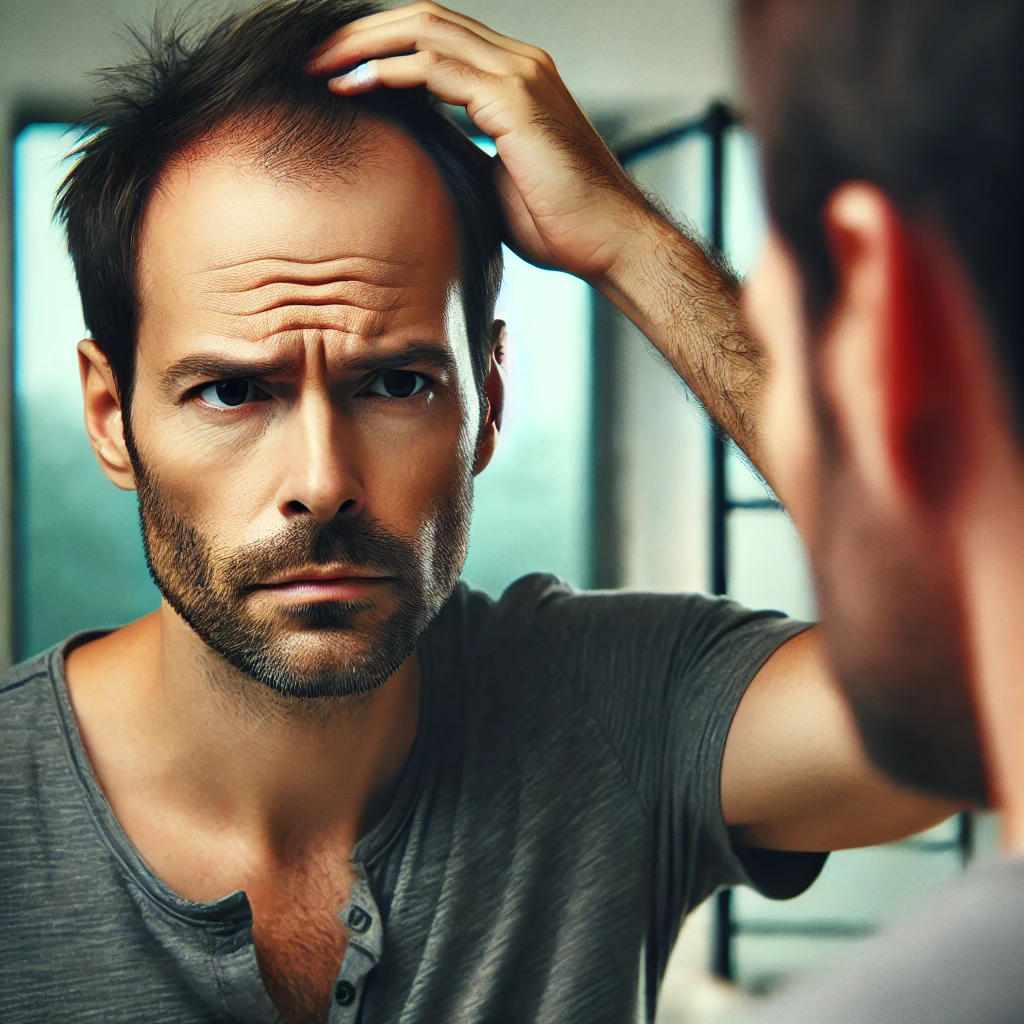
Is a Visible Scalp a Sign of Balding? Understanding Hair Thinning and What You Can Do
Noticing that your scalp is becoming more visible can be unsettling, but it doesn’t always mean you’re bald. Several factors, such as hair density, natural parting, lighting, and even hair color, can make your scalp appear more visible without being a cause for concern. However, if you’re also experiencing increased shedding or overall thinning, it’s worth exploring potential causes and solutions.
This guide will help you understand whether your visible scalp is a sign of balding!
Is a Visible Scalp a Sign of Balding?
A visible scalp isn’t always a red flag. Factors like fine hair, light hair color, or even the way your hair naturally parts can make your scalp more noticeable. However, if you’re also seeing other signs like excessive shedding, a widening part, or thinning around the crown, it could indicate hair loss.
Here are some key signs to watch for:
– Increased Hair Shedding: Finding more hair on your pillow, in the shower, or on your brush than usual.
– Widening Part: Your hair part may look broader over time.
– Thinning at the Crown: Reduced hair density on the top of your head or near the crown area.
– Excessive Daily Hair Loss: Losing more than 50–100 hairs a day could signal a problem.
If you notice these symptoms alongside a more visible scalp, it’s time to act on it.
Common Causes of Hair Thinning or Balding
Hair thinning can stem from a variety of factors, including:
- Genetics: Hereditary conditions like androgenic alopecia (male or female pattern baldness) are a leading cause of progressive hair loss.
- Nutritional Deficiencies: Lack of essential nutrients like iron, zinc, biotin, and vitamins (such as D and B12) can weaken hair and lead to shedding.
- Hormonal Changes: Pregnancy, postpartum, menopause, or thyroid imbalances can disrupt hair growth cycles.
- Stress and Lifestyle: Chronic stress, poor sleep, or an unhealthy lifestyle can negatively impact hair health.
- Traction Alopecia: Tight hairstyles that pull on the hair can damage the follicles over time.
- Medical Conditions: Autoimmune diseases, scalp infections, or anemia may contribute to hair loss.
Understanding the root cause is the first step toward an effective solution.
Solutions to Improve Hair Health
- Consult a Dermatologist
A specialist can help identify the cause of your hair loss and recommend treatments like minoxidil or finasteride, which are FDA-approved for certain conditions.
- Improve Your Diet
Incorporate nutrient-rich foods to support hair health, such as:
– Iron (spinach, red meat, lentils).
– Vitamin D (fortified foods, sunlight).
– Zinc (nuts, seeds)
– Biotin (eggs, sweet potatoes).
- Use Scalp-Friendly Hair Products
Choose shampoos and treatments with ingredients like keratin, caffeine, and niacinamide to nourish the scalp and strengthen hair. Avoid harsh chemicals that strip natural oils.
- Adopt Gentle Styling Habits
Avoid tight hairstyles like ponytails or braids that strain the hair roots. Use a wide-tooth comb and limit heat styling tools.
- Manage Stress
Practice mindfulness techniques like yoga or meditation to reduce stress, which negatively affects hair growth. Regular exercise and adequate sleep are also essential.
- Try Natural Remedies
– Scalp Massages: Regular massages boost blood circulation and promote follicle health.
– Essential Oils: Oils like rosemary, peppermint, and lavender support hair growth when applied to the scalp.
By combining these strategies with a consistent routine, you can improve your hair health.
Success Stories: Real-Life Hair Recovery
- Overcoming Postpartum Hair Loss
A 35-year-old woman experienced significant hair loss after childbirth. With guidance from her doctor, she adopted a protein-rich diet, used professional-grade hair products, and managed her stress. Over several months, her hair health improved dramatically.
- Battling Genetic Hair Loss
A 45-year-old man noticed thinning at his temples due to hereditary androgenic alopecia. After starting a minoxidil routine and taking biotin supplements, he saw a noticeable improvement in hair density within six months.
- Addressing Nutritional Deficiencies
A woman in her 50s discovered her hair thinning was linked to iron deficiency and anemia. With iron-rich foods, supplements, and regular scalp massages, she regained healthier, fuller hair.
- Managing Stress for Hair Recovery
A 28-year-old man attributes his sudden hair loss to chronic stress and poor lifestyle choices. By adopting stress-relief practices and rosemary oil treatments, he saw significant improvements in both his hair and overall well-being.
When to Seek Professional Help
If you’re experiencing persistent thinning or other concerning signs, consult a dermatologist. Early diagnosis is key to managing hair loss. Treatments like minoxidil, PRP therapy, or personalized lifestyle changes can make a significant difference.







